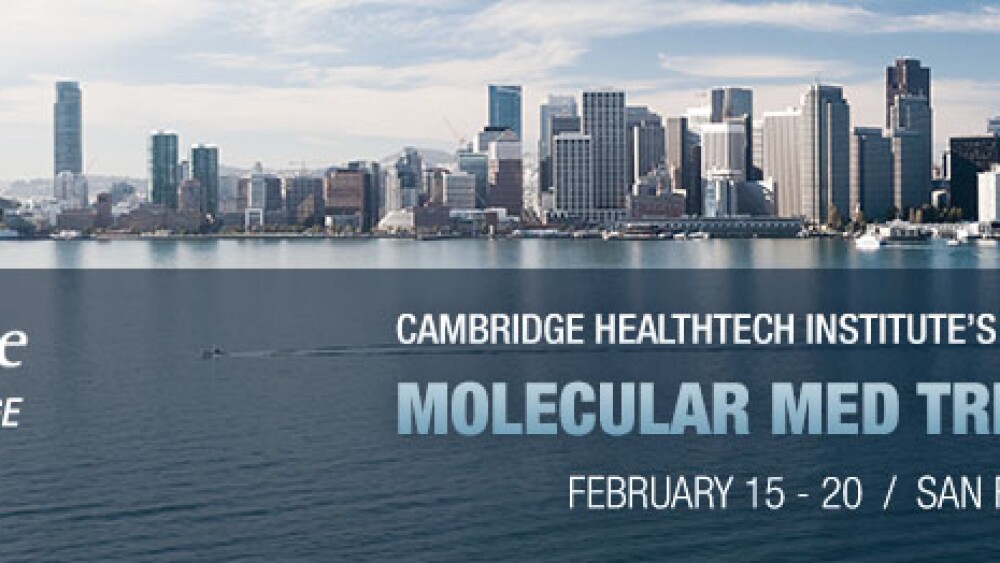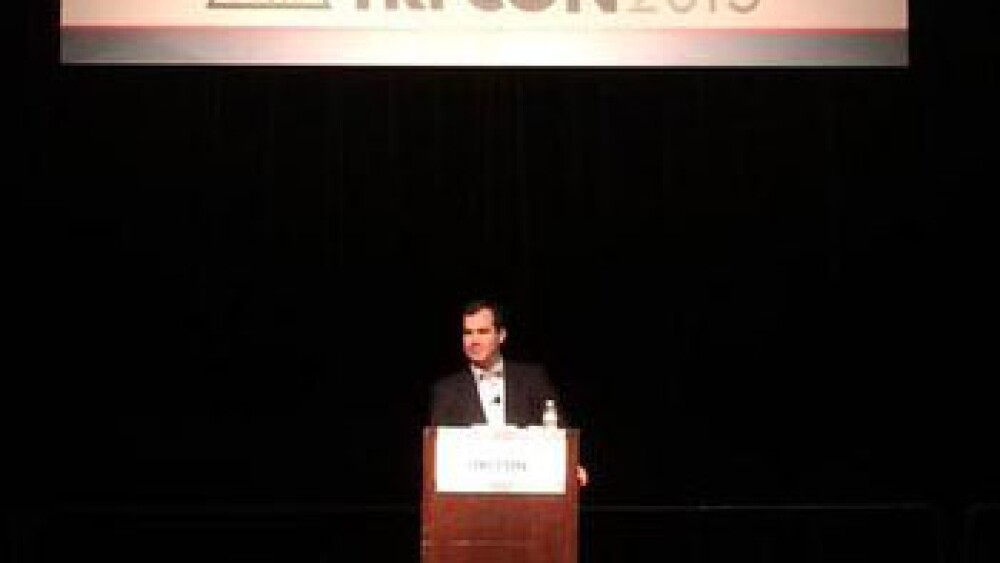February 17, 2015
By Riley McDermid, BioSpace.com Breaking News Sr. Editor
Tackling rare diseases via molecular medicine has been “huge” for parents with children suffering from barely known diseases, and recent advances have given thousands of people new hope, Matt Wilsey, president of the Grace Wilsey Foundation, told an audience of scientists and biotech watchers in San Francisco on Tuesday.
Wilsey made the comments at the 22nd International Molecular Medicine Tri-Conference, where over 3,000 attendees from 40 countries descended San Francisco for a week of the latest news and advances in molecular medicine.
As the main speaker for the plenary keynote session “The Dawn of a New Research Model: The Case for Parent - Clinician - Researcher Collaboration,” Wilsey spoke primarily about his family’s fight to find a cure for their daughter Grace, who suffers from NGLY1 deficiency.
It is a complex and devastating neuromuscular disease that affects less than 50 confirmed patients globally, but Wilsey said once Grace’s disease was finally diagnosed, the family was greatly encouraged by the massive advances in genome mapping in recent years.
“Remember Remy, from ‘Ratatouille'? Good ideas come from anywhere, including rats,” said Wilsey. “NGLY1 shows a protein accumulation disorder, that degrades and creates misfolded protein. On our second shot at exome sequencing, NGLY1 was found and shown to be causal.”
The Wilsey family is a case study for researchers on how to harness the power of community to treat and study rare diseases. Personally affected by NGLY1, the Wilseys have researched, recruited and assembled a global team of 40 researchers across 10 international centers--all during the last 18 months.
“The level of speed and collaboration is unparalleled. The team represents the very best in multiple fields akin to the “Manhattan Project,”” said Wilsey. “All we asked was, ‘Who is the best person at…?’ And we wound up with a far-flung, amazing team.”
Grace Wilsey has two defective copies of NGLY1, which means she does not produce an enzyme to cut off sugar, which in turn affects her ability to degrade protein properly. This protein accumulation then leads to oxidative stress (an imbalance between the production of free radicals and antioxidant defenses) and cell damage.
“Many NGLY1 deficient patients were initially diagnosed with Rett syndrome or mitochondrial diseases since the physical characteristics are so similar,” said Wilsey. “If a doctor thinks your child has Rett or a mitochondrial disease, but cannot find the root genetic cause, please suggest sequencing NGLY1.”
Wilsey said it hasn’t been an easy battle, particularly when it came to finding help from large health regulators or nonprofits that study disease, like the National Institutes of Health (NIH).
“We were rejected for NIH undiagnosed clinical disease program because we’d already done more than NIH,” he said.
“Our game plan for NGLY1: Develop, test, deploy treatment to buy patients time,” said Wilsey. “But we also want to use more animal models, long term solutions and raise awareness.”
But the speed at which their foundation has moved has produced some solid instruction. “For us, the lessons learned are parents have great intuition, good ideas come from anywhere, move fast and break things, and have objectives/milestones,” he said.
There are over 7,000 known rare diseases that affect an estimated 30 million Americans and 350 million people worldwide.
“The number of diseases with a known genetic cause is going to increase rapidly with next generation sequencing.
Science is not equipped to handle the explosion. Reduced government funding has exacerbated the problem,” said CHI. “Science will have trouble understanding and treating these diseases quickly and cost effectively using the historical model. A new approach is needed, one based on parent, clinician, and researcher collaboration.”Wilsey said for now, the family foundation is using all its resources to find funding wherever it can, including a Facebook page, CureNGLY1, and via Twitter at @gracewilseyorg and matt@gracewilsey.org.
“How do you get VCs to buy in with such a small patient population?” he said. “A VC can be anyone, so you’ve got to use your own resources to get started. How do you scale these efforts? We are looking for scientific quarterback to assess progress better.”
Hosted by the Cambridge Healthtech Institute, this year’s conference will continue for six days and has a focus on Drug Discovery, Genomics, Diagnostics and Information Technology. Tri-Conference, or #TRICON, includes an expanded program with six symposia, over 20 short courses and 17 conference programs. Over 200 companies are setting up and manning their booths to pitch products and technologies to the industry’s wonkiest decision makers.
Perhaps most importantly, more than 500 speakers will participate in 400 presentations and panel discussions in programs such as Genomic Technologies for Patient Stratification and Technology-Driven Oncology Clinical Development, and symposia including New Frontiers in Gene Editing and Clinical Cancer Immunotherapy.
BioSpace Temperature Poll
Will Job Cuts Continue? After a week that saw Quintiles, Sanofi and Actavis slashing almost a 1,000 biotech jobs, BioSpace wonders if the ax will continue to fall. Give us your thoughts about the sector’s “streamlining” below.






